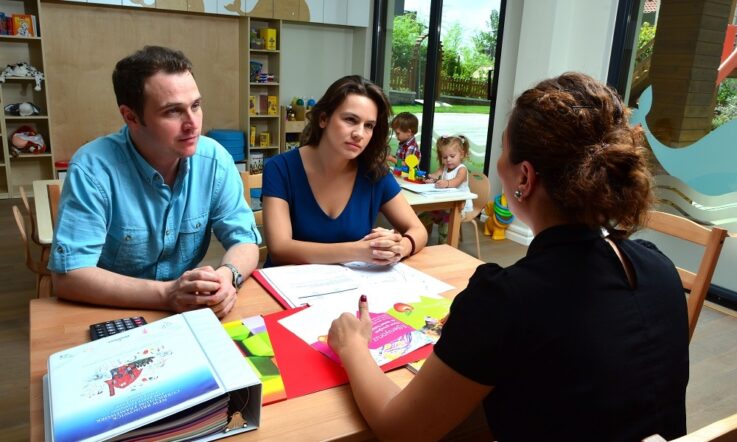Introducing a new goal can seem overwhelming if you only look at the end target, but (just like we tell students) breaking it down into smaller steps will make it more manageable. Building strong relationships and creating a positive learning environment is conducive to improving student outcomes. In this article Year7-10 Humanities teacher Andreas Katsanos shares a step-by-step process he undertook to refine his own classroom practice in these 2 areas while at Beaconhills College in Melbourne.
We’ve all had difficult classes where students struggle to engage, and fostering a positive and strong work environment in these classes can sometimes be difficult. Often, many ‘one-size-fits-all’ solutions will take up a lot of extra time or can often be unsustainable. Below is a step-by-step process that I undertook initially over the course of a term. With a few simple hacks I found it to be quite efficient. I saw some fantastic results in my classes and continued it throughout the year.
And before you ask, no, there were no incentives or lollies involved at all!
Step 1: Find those engaging best
Firstly, in these classes let’s recognise that not all students are disengaged. It only has to start with a handful of students that are doing well and a few more that have a good day now and again. I found the key is to recognise and reward the positive behaviour being displayed. This can be done through a simple ‘Hey “X” you did fantastic work today and your contribution was great!’ It’s important that this acknowledgement is something that other students can also recognise and see.
Step 2: Contacting home
The next step is a parent email or phone call highlighting that the student(s) have done well. Previously I would follow the quite common narrative in teaching of only contacting parents when something went wrong. This would sometimes yield an improvement in behaviour, but it wasn’t favourable, in the sense that students would acquiesce rather than engage. As with any relationship, one built on coercion has quite a short timeframe and students would quickly fall into their usual negative behaviours. In Step 2 of this new approach, I often would choose 5 students who had done well each week or fortnight and would take the time to send an email to their families or (if I wasn’t too under the pump) I’d make a phone call. This information the parents naturally shared with their child, and I found this would 100% reinforce continued engagement and positive behaviour in the classroom from those particular students.
Step 3: Acknowledging those improving
Acknowledging students that have improved was my next step, and I found this vital to spreading the positivity throughout the class. Acknowledging that students have improved is a fantastic way to make these students feel that their work and behaviour hasn’t been ignored, as too often you can slip into poor behaviour being the central focus in the classroom.
Step 4: Poor behaviour will happen
Managing difficult or poor behaviour is quite tricky as each school has different behaviour management policies. I found the most effective would be to take the student aside and start with the question ‘How are you today?’ which would always be met with an ‘okay’ or ‘fine’ and therefore I would then follow with, ‘I’ve noticed your behaviour is very disengaged today, is everything okay? If you don’t feel comfortable sharing that’s okay too’. From here the conversation will usually offer other places/staff who can support if they’re not comfortable sharing or act accordingly with the information given. These conversations end with something along the lines of ‘well, we still have some class time left, what’s the best way I can support you during the lesson?’ I usually follow this up with a supportive email home and generally see positive changes the following lesson – which leads to a return to previous steps by acknowledging and following up with a positive phone call home.
Step 5: Repeat
At this point, I found that the positivity would spread, and it just came down to selecting more and more students to positively reinforce and repeat the process. What I found over time was that the more positive reinforcement I gave, and the more conversations and emails I sent home, my students felt that their learning and attitude was being recognised – and not did they have a higher level of engagement, but their self-efficacy also improved.
Final reflections
Although this may seem daunting, and a significant number of extra tasks to do, I found the benefits were definitely worth it. A few hacks such as pre-written emails and an efficient school communication system (which I did not have at the time but do now) can help dramatically. I did this 5-step process whilst on a full teaching load and had an additional role supporting the digital transformation team in the college. Once it became routine, I didn’t feel I was overwhelmed.
I built stronger relationships with the students and turned the classroom into an extremely positive place where students were more focused, collaborated better and had increased self-efficacy when completing class tasks, which was evidence in their assessments. The best part was really bridging that gap between parents and teachers – it really strengthened those relationships also. Part of me hoped it would lead to fewer parent-teacher interviews – I think I ended up with more, however, they were shorter and more positive…but I digress.
There are so many aspects to education that only those in the profession truly understand. Yet, at their core, students want to feel accepted, acknowledged and comfortable in a setting where they are at their most vulnerable as grades and rankings put them in a position where they can be made to feel lesser than their peers. This step-by-step process had many secondary benefits (such as improving behaviour, individual student confidence and many others), alongside fostering relationships and improving engagement, and it’s something that I continue to this day.
Think about the students in your class. How do you work to build positive relationships with all students? How often do you contact parents for a positive conversation about a student?



